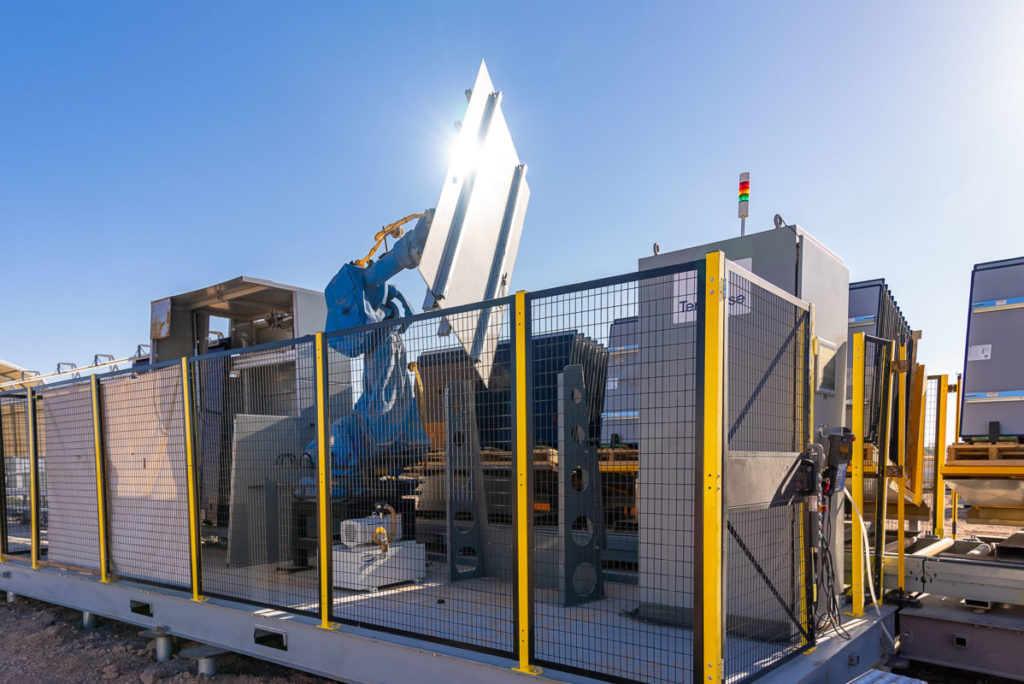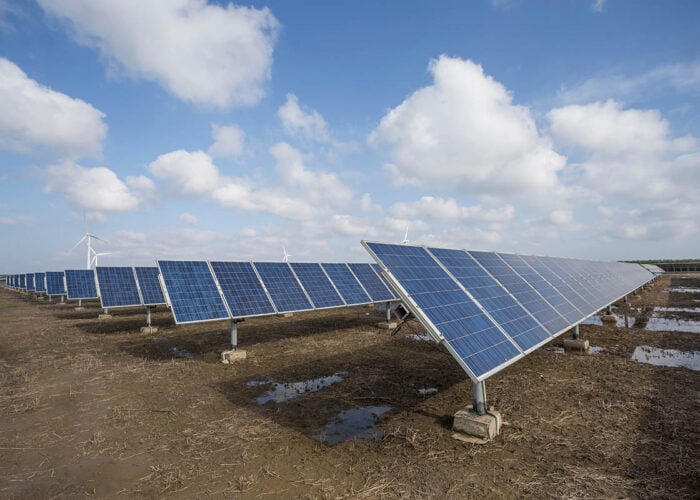
US solar technology company Terabase Energy has deployed its Terafab construction automation system at the White Wing Ranch solar project in the US state of Arizona, the first time the process has been used to aid in the construction of a commercial solar farm.
The White Wing Ranch farm is a 225MW project, of which Terafab was used to install 17MW of solar panel capacity. Terabase worked on the project with developer Leeward Renewable Energy (LRE) and EPC contractor RES, and LRE expects to commission the project in 2024.
Unlock unlimited access for 12 whole months of distinctive global analysis
Photovoltaics International is now included.
- Regular insight and analysis of the industry’s biggest developments
- In-depth interviews with the industry’s leading figures
- Unlimited digital access to the PV Tech Power journal catalogue
- Unlimited digital access to the Photovoltaics International journal catalogue
- Access to more than 1,000 technical papers
- Discounts on Solar Media’s portfolio of events, in-person and virtual
“The benefits demonstrated by this project underscore the transformative potential of automation in advancing solar construction practices, enabling us to accelerate and de-risk our project pipeline,” said Sam Mangrum, executive vice-president of project execution at LRE.
The Terafab system, which Terabase has described as a “factory to make factories”, aims to improve operational efficiency by automating construction processes that typically rely on human involvement.
At the White Wing Ranch project, Terafab machinery lifted steel tubes and solar panels, removing the need for workers to do so, which Terabase called “a first in the industry”. The company estimated that this use of automated technology improved the operational efficiency of construction by 25%, compared to construction completed by human workers, although Terabase did not specify how this was measured.
Terabase launched the Terafab system in May this year, and in July, raised US$25 million in funding to deploy the technology on a larger scale. The company expects to scale-up production at its Terafab factories, targeting annual production of 10GW of solar panels, and the system’s use at the White Wing Ranch project is an important milestone towards this target.
The news follows Terabase’s launch of the Terrain Pro platform, a piece of software that forms part of its PlantPredict suite, last month. Terrain Pro enables solar developers to complete earthwork modelling analysis as part of the solar farm design process, to help select and deploy equipment such as solar trackers, and forms part of Terabase’s plans to implement sophisticated modelling and automation in the design of solar projects.
“With the proliferation of terrain-following variants from the major tracker suppliers, the task for civil engineers to perform the grading design has gotten exponentially more complex,” a Terabase spokesperson told PV Tech, discussing the merits of the Terrain Pro platform. “While the trackers can significantly reduce the amount of grading needed, they do not always eliminate it completely, which is why the design still needs to be done.”







